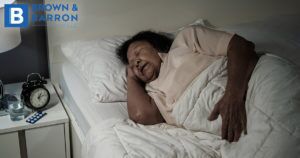Throughout their history, nursing homes have drugged residents to make them easier to manage. Many years ago, this was considered a practical way to manage difficult or agitated patients or to handle some of the symptoms of dementia. Since those times, the industry has been made aware of the dangers of this type of drug administration, and the Centers for Medicare and Medicaid Services (CMS) created regulations to define how and when sedatives and antipsychotic drugs can be used. Sadly, a recent New York Times investigation has discovered that nursing homes have figured out a way to trick the system to continue drugging residents.The ProblemUsing drugs to make residents more docile may seem harmless, but it’s cruel and dangerous. Antipsychotic medications require a specific medical diagnosis to be used legally, and nursing homes have been guilty of overprescribing them to patients who often do not have that diagnosis, and many of them do not understand what they are being given. This practice is used simply to make the nursing home’s job easier, and in many cases, this a business practice, because drugged-out and sleeping residents can be managed by fewer staff members, thereby increasing the potential profits of nursing homes. No one should have to experience life in a drug-induced stupor, so that a business doesn’t have to do its duties responsibly.
“Using inappropriate drugs to control patients is a form of nursing home abuse. In fact, the practice is often called ‘putting residents in a chemical straitjacket,’” said Brian Brown, a founding attorney with Brown & Barron, a Baltimore law firm that specializes in nursing home abuse and neglect cases.
It’s also hazardous to their health, for instance, by increasing their chance of falling and injuring themselves. When elderly people, such as nursing home residents, slip and fall, the chance of serious injury or death is much higher than for younger people. According to the American Trauma Society, up to 20% of nursing home falls lead to a serious injury and 1,800 residents die of falls each year. The use of these drugs can have medical complications and side effects as well. The New York Times reported that antipsychotic drugs “are dangerous for older people with dementia, nearly doubling their chance of death from heart problems, infections, falls and other ailments.”
Why Regulations Have Failed
Regulations were instituted by the CMS in recent decades to protect residents from these drugging practices. These drugs do have a legal and medically responsible use, and the CMS regulations were designed to ensure that nursing homes were only using them for approved uses and to encourage nonpharmacologic solutions to dementia patients. The first guidelines from CMS were in 2012, and revised regulations were instituted in 2016. The New York Times investigation found out that nursing homes continued to use antipsychotic medications by getting phony diagnoses of medical conditions to justify how often they were using the drugs. TheNew York Times found that since 2012, when CMS began revising regulations, that the population of national nursing home residents with a schizophrenia diagnosis jumped 70 percent.
“People don’t just wake up with schizophrenia when they are elderly,” said Dr. Michael Wasserman, a geriatrician and former nursing home executive who was interviewed by the New York Times. “It’s used to skirt the rules.”
If you have noticed an abrupt change in behavior by a loved one in a nursing home, such as acting overly tired or “loopy” or sleeping much more, trust your instincts. You might want to ask the nursing home if there has been a recent change to their diagnosis or medication regimen. If you suspect that an injury or nursing home abuse has resulted from unnecessary medication, contact an expert or schedule a free consultation by calling (410) 698-1717.


